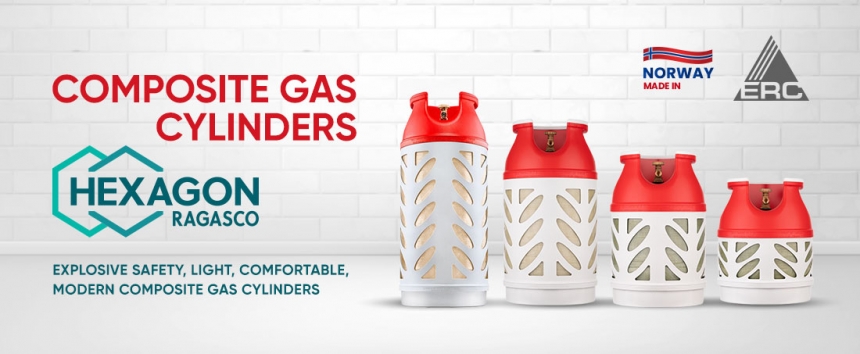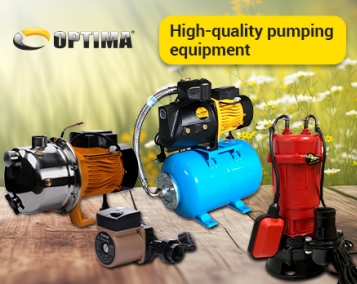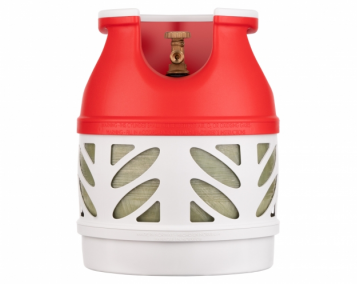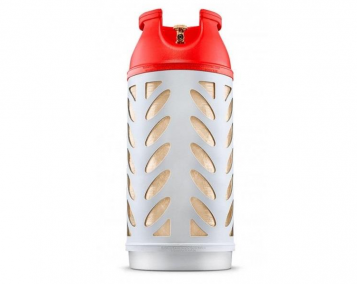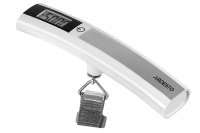 Eng
Eng
- Home Appliances, Tools and Household Goods
- Consumer Goods & Electronics
- Products & Solutions for Enterprises
- Toys & Goods for Kids
- All vendors
- Home Appliances, Tools and Household Goods
- Consumer Goods & Electronics
- Products & Solutions for Enterprises
- Toys & Goods for Kids
- Blowers
- Lawn mowers
- Garden shredders
- Cultivators and motoblocks
- High-pressure cleaners
- Chain saws
- Accessories for irrigation and high pressure cleaners
- Pumps
- Shears for garden
- Sprayers
- Shovels
- Garden tools
- Garden furniture
- Garden fencing
- Potbelly stoves
- Trolleys for garden construction
- Tenty i zavisy
- Goods for picnic
- Accessories for lawn mowers and trimmers
- Accessories for chainsaws
- Wood splitters
- UPS and accessories
- Sources of uninterruptible power supply
- Gaming products
- Gaming PCs and hardware
- Processors for gaming
- Game consoles and accessories
- Virtual reality glasses
- Gaming peripherals and accessories
- Glasses for computer
- Games
- Game collectible figurines and accessories
- Merchandise, gaming attributes
- Computer peripherals
- Computer components
- Media tablets
- Monitors
- Drives and Flash-memory
- Laptops & Accessories
- PC and All-in-One PC
- Software
- Accessories and options for computer and office electronics
- Cleaners
- 2E Custom PC
- Computer tables
- Travel goods
- Cooler bags, thermoboxes
- Gas cylinders and accessories
- Haberdashery
- Umbrellas
- Tactical gear and equipment
- Radio equipment and navigation
- Tactical watches
- Accessories for tactical drones
- Tactical equipment
- Pouches
- Military gloves
- Knee and elbow pads
- Plate carriers
- Elements for plate carriers
- Tactical vests
- Tactical flask
- Tactical eye protection
- Tactical glasses
- Tactical goggless
- Personal heating equipment
- Chemical heating
- Electric heating
- Hearing protection
- Active Shooting Headphones and Headsets
- Navushnyky ta harnitury striletski pasyvni
- Tactical shovels
- Backpacks, bags, duffle-bags
- Tactical backpacks
- Backpacks, bags, duffle-bags
- Sling bags
- Camping equipment
- Karrimat and mattresses
- Tactical clothing and footwear
- Raincoats
- Chemical light
- Bicycle accessories
- CCTV Cameras
- Smart switches and buttons
- Smart Sensors
- Smart controllers, gateways, panels
- Smart sockets, relays and motors
- Smart drives, thermostats, control panels
- Smart sirens
- Search engines
- Heating systems
- Towel warmers
- Radiators
- Pipe fittings
- Accessories for radiators and heated towel rails
- Accessories and components for hot water heating
- Circulation pumps
- Underfloor heating hydronic
- Underfloor heating
- Underfloor heating pipes
- Intercom systems
- Thermoregulators
- Sewer pipes and fittings
- Accessories and mounts for alarm systems
- Accessories for temperature controllers
- Accessories for thermotechnics
- Control automation for thermotechnics
- Quick installation systems
- Network filters
- Light source, Lights
- Accessories for lamps
- Chandeliers, lamps, sconces, floor lamps
- Electric light bulbs
- Light fixtures
- Fixtures external
- Indoor (interior) light fixtures
- Fitting and light accessories
- Electrical-installation equipment
- Sockets and switches
- Electrical switchboards
- Contactors
- Terminals
- Automatic switches
- Circuit breakers
- Voltage Limiters
- Relays and alarms
- Tires
- Modular and change-over switches
- Kits and accessories for smart lighting
- Clockwork toys
- Toys-keychains
- Toys
- Bath toys
- Toys for sand
- Playing Kits
- Toy transport
- Toy weapons
- Game Figures and Accessories
- Construction sets
- Dolls
- Puppet show
- Doll accessories
- Baby mobiles
- Musical instruments
- Stuffed Toys
- Balls
- Board games
- Puzzles
- Вeanbag
- Radio-controlled cars
- Learning toys
- Creativity
- Goods for holidays
- Music and storage boxes
Safety first: simple and useful rules for using gas cylinders

More and more Ukrainians are forced to use gas cylinders. At the same time, many people are afraid of such use due to numerous news reports about explosions of metal cylinders. It is worth choosing explosion-proof composite cylinders of the Norwegian company Hexagon Ragasco in order to get rid of the explosion and fear risk. It is easy to understand the rules of refueling and use.
A composite gas cylinder is better than any metal one
There are metal and composite gas cylinders. Despite the safety and numerous advantages of composite cylinders, there is a demand for metal ones. Why? Why do people choose metal cylinders despite the high risk of explosions? Only in view of the lower cost - there are no more arguments. All other arguments will be in favor of composite cylinders, and the main one is safety, no risk of the cylinder exploding, even if it is directly exposed to fire for a long time.
Previously, the steel was a single material used for the cylinders manufacture, but now there are more modern polymer-composite materials made of fiberglass thread covered with epoxy resin. A safe alternative to steel containers is made from this material - composite cylinders. The Norwegian brand and factory Hexagon Ragasco is recognized as the world leader in the production of such cylinders: completely safe, high-quality, light and simple, ergonomic, modern, variable in size, made in Norway; available in Ukraine.
Numerous advantages of Hexagon Ragasco composite gas cylinders
Increased safety. When dealing with gas, safety is a main priority. Over the past 15 years, Hexagon Ragasco composite cylinders have withstood many rigorous tests in various climatic environments: from -40 °C arctic cold to +65 °C desert heat. Hexagon Ragasco cylinders withstand twice the bursting pressure of metal cylinders and are also completely explosion-proof. The risk of explosion is completely eliminated even in the event of a fire, it has been proven by tests and experience of use in extremely difficult conditions. More than 11 million Hexagon Ragasco cylinders are used in the world and prove every day that having the right cylinder means being safe.
Lightweight. The lightweight of Hexagon Ragasco cylinders is a significant advantage. Such a full gas cylinder weighs less than an empty metal one! This guarantees simplified operation both at logistics enterprises and by the end user. Composite cylinders are much lighter and cheaper, they are easier and faster to move. The lightweight of even filled cylinders is especially important now, when you often have to walk up the stairs to the upper floors. Note that the Hexagon Ragasco website and sometimes in their descriptions state the weight of the cylinder without the valve, because depending on the export countries and standards, the valve may be of different design. Hexagon Ragasco cylinders have a valve of the Ukrainian connection standard (not KLF), so the cylinders are already weighed with such a valve, that is, the weight indicated in the description is already took this into account. For a complete understanding, we note two weights - without a valve and with it, so that it is clear why some write about a different weight and who is right. Knowing the correct weight of the cylinder with residual gas is important for refueling! And the best way to determine it is to purchase scales of the kantar type (available in the assortment of products).
Ergonomic, modern, convenient design for carrying and transportation due to handles - holes in the body, which at the same time hide and protect the valve of the cylinder. In addition, it is convenient to attach a portable scale to them and weigh the cylinder for guaranteed correct refueling. The cylinders have an attractive design and color range, made of pleasant to the touch materials. There are four sizes to choose from: three are available in Ukraine, and the fourth, the largest, is expected in February 2023.
No rust. Composite cylinders do not rust. While this an insurmountable disadvantage of metal ones, which require special operating conditions because of this.
Transparent: the gas refueling level is visible through the transparent matte wall of the cylinder. The user can easily control the amount of remaining gas and determine the time when refueling is necessary, so there will be no trouble when the gas suddenly runs out at the most inopportune moment. The semi-transparent housing of Hexagon Ragasco makes it unnecessary to install additional measuring devices.
Durability. The service life is 20 years from the date of manufacture. With proper use, storage and periodic inspection (at least once every 10 years), composite cylinders will last much longer.
Made in Norway at perhaps the most famous factory of composite cylinders in the world, the models have a valve of the Ukrainian standard: you can easily choose a reducer, and what’s more, it can be immediately purchased complete with a cylinder, as well as other additional equipment - a gas or combined stove with a different number of burners, even a gas heater! If you have a reducer with a KLF connection standard, you need to purchase an adapter. Take care of the quality of such an adapter, for example, the German GOK is almost the best. These adapters are also available in special universal kits with reducer and hose.
The main advantages of Hexagon Ragasco composite gas cylinders in the manufacturer's video:
How to correctly refuel and calculate the remaining gas in a gas cylinder?
At first glance, it seems that it is very easy to correctly refuel a cylinder with propane, butane or their mixture, because its volume is known and engraved on the surface, as well as information about the gases with which it is not permissible to refuel the cylinder. But how to find out how much is left and how much needs to be filled? And how much is it not in liters, but in kilograms? The scheme for the correct calculation of the remaining gas in each cylinder, which is used constantly, will help.
First refueling
When the cylinder is new, before the first refueling it is necessary to unscrew the valve and release the compressed air. The cylinder is delivered from the factory under pressure, which indicates its tightness and integrity. If you forget to do this, you can still refuel the cylinder with gas, but as a result, it will be a gas-air mixture. And it will not be enough for a long time, and the quality of burning will be low.
For proper refueling and further normal operation of any devices that work on liquefied propane, butane or a propane-butane mixture, it is necessary to refuel the cylinder with gas no more than 80% of its full volume! It is important that there is a place in the cylinder for an "air cushion" - a free zone, which is necessary for the transformation of liquefied propane-butane into gas. For metal cylinders, this becomes especially critical also due to the risks of uncontrolled overpressure, when the temperature outside and inside the cylinder suddenly changes, and therefore the volume of gas. Data on the full volume of the cylinder are indicated in the operating instructions and the product passport. Data on the weight of the cylinder and the weight of the gas to be refueled are also indicated.
Refueling (calculation by weight)
It is good when it was the first refueling of an empty cylinder, but what to do next when the amount of remaining gas is unknown? Even a small amount of residual gas can cause some problems. The main thing for the consumer and the operator, who will refuel the cylinder, is to remember that this remaining amount will vary depending on the volume of the cylinders and the type of fuel. Therefore, every time during refueling, the amount of remaining gas in the cylinder must be checked on the scales. Then, from the result just obtained (the weight of the remaining gas together with the weight of the cylinder), it is necessary to subtract the previously known constant weight of the empty cylinder (here, let's remember the weight of the cylinder with the valve, which is specified in the product description). This difference, of course, will be the weight of the remaining gas in the cylinder. The rest can be refueled without exceeding the limiting indicators and guided by the weight data from the table below, according to the gas used - propane, butane or their mixture.
Volume, weight of gas recommended by the manufacturer for refueling Hexagon Ragasco cylinders:
It is necessary to refuel no more than 80% of the full volume of the cylinder or on the recommended weight.
If we are talking about refueling in liters, which is common to many, it should be noted once again that you need to refuel the cylinder up to 80% of its full volume.
The mark on the composite cylinders about the specified capacity is nominal. For example, with a nominal volume of 12.5 liters, the useful working volume will be 10 liters. For a cylinder with a nominal capacity of 18.2 l - 14.5 l, with a nominal capacity of 24.5 l - 19.5 l, with a nominal capacity of 33.5 l - 26.5 l.
You need to understand how much an empty cylinder weighs (with the valve and with the compressed air that is in the new cylinder deflated, for absolute accuracy). We know that the weight of an empty 12.5-liter cylinder is 3.4 kg according to the passport, but we must not forget that it is the weight without the valve. The weight with the valve is slightly higher (see table). Obviously, you need to weigh the cylinder with the remaining gas. Next, we again perform simple arithmetic operations and find out the result - the difference between the weight of an empty cylinder with a valve and a cylinder with the remaining gas. For example, we learn that the remaining gas (propane-butane mixture) in the cylinder is 1.6 kg. At the average density of the propane-butane gas mixture (approximately 0.54 kg g per 1 liter), this is almost 3 liters of residual gas in the cylinder (divide 1.6 kg on 0.54). In this case, it is necessary to refuel with 7 liters - up to 80% of the full volume of the cylinder of 12.5 liters! In other words, no more than 7 liters of gas can be added to such an initially empty cylinder.
Of course, this method of calculation is applied to cylinders of all volumes, regardless of the type of fuel (propane, butane or their mixture).
We recommend to take with you a portable scale that can be purchased complete with a cylinder from us or our business partners, as well as adding a reducer with a hose and clamps to it, an adapter from the KLF standard, a tile, a heater, etc.
Do not neglect the safety rules when using equipment other than the cylinder! Take care of the rules of operation and safety measures indicated in the description of other products. However, at the same time, be sure: the composite Norwegian cylinder Hexagon Ragasco will definitely not betray you!



